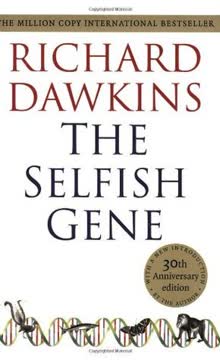Key Takeaways
1. Epigenetics: The Revolutionary Science Beyond DNA
DNA isn't really like that. It's more like a script.
Beyond the blueprint. Epigenetics is the study of heritable changes in gene expression that do not involve changes to the underlying DNA sequence. It explains how cells with identical genetic information can differentiate into various cell types with distinct functions. Epigenetic modifications act like a set of switches that turn genes on or off, determining which proteins are produced in a cell.
Mechanisms of epigenetic regulation:
- DNA methylation: Addition of methyl groups to DNA, typically silencing gene expression
- Histone modifications: Chemical changes to histone proteins that affect DNA packaging and accessibility
- Non-coding RNAs: RNA molecules that regulate gene expression without being translated into proteins
These epigenetic marks can be influenced by environmental factors and passed down through cell divisions, explaining how environmental exposures can have long-lasting effects on gene expression and phenotype.
2. The Surprising Plasticity of Cellular Identity
When scientists talk about epigenetics they are referring to all the cases where the genetic code alone isn't enough to describe what's happening – there must be something else going on as well.
Cellular reprogramming. The discovery that differentiated cells can be reprogrammed into a pluripotent state challenged the long-held belief that cellular differentiation was irreversible. This plasticity is mediated by epigenetic mechanisms.
Key experiments demonstrating cellular plasticity:
- John Gurdon's nuclear transfer experiments with frogs
- Shinya Yamanaka's induced pluripotent stem cells (iPSCs)
- Direct conversion of one cell type to another (e.g., fibroblasts to neurons)
These findings have profound implications for regenerative medicine and our understanding of development and disease. They highlight the dynamic nature of the epigenome and its crucial role in determining cell fate.
3. Environmental Influences on Gene Expression
Epigenetic phenomena can be seen all around us, every day.
Nature meets nurture. Environmental factors such as diet, stress, and toxins can influence epigenetic marks, altering gene expression without changing the DNA sequence. This provides a molecular mechanism for how the environment can impact health and development.
Examples of environmental influences on epigenetics:
- Dutch Hunger Winter: Prenatal exposure to famine affected health outcomes in adulthood
- Maternal care in rats: High levels of maternal grooming led to epigenetic changes affecting stress responses
- Exposure to endocrine disruptors: Can lead to transgenerational epigenetic effects
These findings underscore the importance of environmental factors in shaping our epigenome and phenotype, blurring the line between nature and nurture.
4. Imprinting: When Parent of Origin Matters
Imprinted regions are stretches of the genome where we can detect parent-of-origin effects in offspring.
Parental conflict. Genomic imprinting is an epigenetic phenomenon where certain genes are expressed in a parent-of-origin-specific manner. This means that for some genes, only the maternal or paternal copy is active, while the other is silenced through epigenetic mechanisms.
Key aspects of genomic imprinting:
- Affects about 100 genes in mammals
- Plays crucial roles in growth, development, and behavior
- Implicated in several human disorders (e.g., Prader-Willi and Angelman syndromes)
- Represents an evolutionary compromise between maternal and paternal genetic interests
Imprinting demonstrates how epigenetic marks can carry information about a gene's parental origin, influencing its expression and function in offspring.
5. X-Inactivation: Nature's Dosage Compensation
Females are epigenetic mosaics.
Balancing act. X-chromosome inactivation is a process in female mammals where one of the two X chromosomes is randomly silenced in each cell. This mechanism ensures dosage compensation between males (XY) and females (XX) for X-linked genes.
Key features of X-inactivation:
- Occurs early in embryonic development
- Involves the long non-coding RNA Xist
- Results in the formation of the Barr body, a densely packed inactive X chromosome
- Creates a mosaic pattern in females, where different cells express either the maternal or paternal X chromosome
X-inactivation exemplifies how epigenetic mechanisms can regulate gene dosage on a chromosome-wide scale, highlighting the complexity of epigenetic regulation.
6. Non-Coding RNAs: The Hidden Regulators
The ncRNA does, in fact, code for something – it codes for itself, a functional RNA molecule.
RNA renaissance. Non-coding RNAs (ncRNAs) are RNA molecules that are not translated into proteins but play crucial roles in regulating gene expression. Their discovery has revolutionized our understanding of gene regulation and cellular complexity.
Types and functions of ncRNAs:
- Long non-coding RNAs (lncRNAs): Regulate gene expression, often through interactions with epigenetic modifiers
- microRNAs (miRNAs): Short RNAs that regulate mRNA stability and translation
- Small interfering RNAs (siRNAs): Involved in gene silencing and defense against viruses
- PIWI-interacting RNAs (piRNAs): Important for germline development and transposon silencing
The abundance and diversity of ncRNAs suggest that they play a central role in fine-tuning gene expression and cellular function, adding another layer of complexity to the epigenetic landscape.
7. Epigenetics in Aging and Disease
Cancer is not a one-off event. Cancer is a multi-step process, where each additional step takes a cell further along the road to becoming malignant.
Epigenetic drift. As organisms age, their epigenetic patterns change, potentially contributing to age-related diseases and the aging process itself. Epigenetic dysregulation is also implicated in various diseases, particularly cancer.
Epigenetic changes in aging and disease:
- Global DNA hypomethylation and site-specific hypermethylation
- Alterations in histone modification patterns
- Changes in nuclear architecture and chromatin structure
- Dysregulation of ncRNAs
Understanding these epigenetic changes offers new insights into the aging process and disease mechanisms, potentially leading to novel therapeutic strategies.
8. Nutrition's Profound Impact on Epigenetics
The sound of a kiss is not so loud as that of a cannon, but its echo lasts a great deal longer.
You are what you eat. Nutrition plays a crucial role in shaping the epigenome, influencing gene expression and potentially affecting health outcomes across generations. This relationship between diet and epigenetics provides a molecular explanation for how nutrition can impact long-term health.
Examples of nutritional impacts on epigenetics:
- Folate and methyl donor availability affect DNA methylation
- Calorie restriction influences lifespan through epigenetic mechanisms
- Maternal diet during pregnancy can affect offspring's epigenome and health
- Bioactive food compounds (e.g., polyphenols) can modulate epigenetic marks
These findings highlight the importance of nutrition in epigenetic regulation and suggest potential dietary interventions for health promotion and disease prevention.
9. Memory Formation and Learning: An Epigenetic Affair
Memory involves long-term changes in gene expression, and in the way neurons make connections with one another.
Neural plasticity. Epigenetic mechanisms play a crucial role in memory formation, learning, and synaptic plasticity. These processes involve dynamic changes in gene expression that are regulated by epigenetic modifications.
Epigenetic mechanisms in memory and learning:
- DNA methylation changes associated with memory consolidation
- Histone modifications affecting gene expression during learning
- ncRNAs involved in synaptic plasticity and memory formation
- Experience-dependent epigenetic changes in the brain
Understanding the epigenetic basis of memory and learning could lead to new approaches for enhancing cognitive function and treating neurological disorders.
10. The Promise and Challenges of Epigenetic Therapies
Epigenetic therapies are the new frontiers of drug discovery.
Targeted interventions. Epigenetic therapies aim to correct aberrant epigenetic patterns associated with diseases, offering a new approach to treatment. These therapies have shown promise in cancer and other disorders, but face challenges in specificity and potential side effects.
Current and potential epigenetic therapies:
- DNA methyltransferase inhibitors (e.g., 5-azacytidine)
- Histone deacetylase inhibitors (e.g., SAHA)
- Histone methyltransferase inhibitors
- ncRNA-based therapies
While epigenetic therapies hold great promise, challenges remain in developing targeted interventions with minimal side effects. The reversible nature of epigenetic modifications offers hope for treating diseases by reprogramming the epigenome.
Last updated:
FAQ
What's The Epigenetics Revolution about?
- Exploration of epigenetics: The book delves into how environmental factors influence gene expression without altering the DNA sequence, highlighting the complexity of biological processes.
- Case studies and examples: Nessa Carey uses examples like the Dutch Hunger Winter to show how epigenetic changes impact health and development.
- Interplay of nature and nurture: It emphasizes the interaction between genetic predispositions and environmental influences, showing how life experiences shape biology across generations.
Why should I read The Epigenetics Revolution?
- Understanding modern biology: Offers a comprehensive overview of epigenetics, reshaping our understanding of genetics and biology.
- Relevance to health and disease: Provides insights into health issues, including mental health disorders and chronic diseases, influencing future research and treatments.
- Engaging writing style: Presents complex scientific concepts in an accessible manner, suitable for both lay readers and those with a scientific background.
What are the key takeaways of The Epigenetics Revolution?
- Epigenetics vs. genetics: DNA provides the blueprint, but epigenetic modifications alter gene expression, leading to different outcomes.
- Impact of early life experiences: Experiences during critical developmental windows can profoundly affect health and behavior later in life.
- Transgenerational effects: Epigenetic changes can be passed down through generations, affecting descendants and challenging traditional views of inheritance.
What are the best quotes from The Epigenetics Revolution and what do they mean?
- “The message is not the medium.” This emphasizes the importance of gene regulation over genetic information itself.
- “Events that take place in the first three months of development can affect an individual for the rest of their life.” Highlights the critical importance of early developmental experiences.
- “The world of epigenetics is a fascinating one.” Reflects the author's enthusiasm for the field and its potential to revolutionize biology and medicine.
What is epigenetics, as defined in The Epigenetics Revolution?
- Definition of epigenetics: Refers to modifications that change gene expression without altering the DNA sequence, including DNA methylation and histone modification.
- Importance of environmental factors: Epigenetic changes are influenced by factors like nutrition, stress, and toxins, crucial for understanding health and disease.
- Mechanisms of gene regulation: These modifications lead to long-lasting changes in gene expression, affecting cellular function and identity.
How do environmental factors influence epigenetics?
- Nutritional impacts: Maternal nutrition during pregnancy can lead to epigenetic changes in offspring, affecting health and development.
- Chemical exposure: Exposure to toxins like bisphenol A can lead to epigenetic modifications affecting future generations.
- Stress and lifestyle: Psychological stress and lifestyle choices can induce epigenetic changes, influencing gene expression and health conditions.
What role do identical twins play in understanding epigenetics?
- Unique case studies: Identical twins share the same genetic material but can exhibit different traits due to environmental influences.
- Concordance rates: Disease concordance rates in twins reveal genetic and environmental contributions to conditions.
- Epigenetic divergence: Identical twins can become epigenetically distinct over time, leading to differences in health outcomes.
What is the significance of the Dutch Hunger Winter in epigenetics?
- Historical context: Demonstrates how severe malnutrition during pregnancy can lead to long-term health effects in offspring.
- Research findings: Individuals exposed to famine in utero are at higher risk for obesity and other health issues later in life.
- Transgenerational effects: Effects of malnutrition can extend beyond the immediate generation, affecting grandchildren's health.
How does The Epigenetics Revolution explain the concept of transgenerational inheritance?
- Definition of transgenerational inheritance: Passing of epigenetic modifications from one generation to the next, influencing traits without altering DNA.
- Examples in humans and animals: Illustrates with human studies and animal models how environmental factors lead to inheritable epigenetic changes.
- Mechanisms involved: Discusses DNA methylation and histone modifications as processes creating lasting effects on gene expression.
What are the implications of epigenetics for health and disease?
- Understanding complex diseases: Helps explain the development of diseases influenced by genetic and environmental factors.
- Potential for therapeutic interventions: Emerging field of epigenetic therapies aims to modify epigenetic marks to treat diseases.
- Public health considerations: Highlights the importance of considering epigenetic factors in public health policies, especially maternal health and nutrition.
How does epigenetics relate to diseases, particularly cancer?
- Epigenetic changes in cancer: Many cancers are associated with abnormal epigenetic modifications, like hypermethylation of tumor suppressor genes.
- Potential for epigenetic therapies: Development of drugs targeting epigenetic enzymes represents a promising area of research in oncology.
- Complex interactions: Understanding interactions between genetic mutations and epigenetic changes is crucial for developing effective therapies.
How does the book address the concept of epigenetic memory?
- Definition of epigenetic memory: Ability of cells to retain identity and function through epigenetic modifications, even after initial signals disappear.
- Examples in development: Involves processes like X inactivation and cellular differentiation, illustrating how cells "remember" their identity.
- Long-term effects: Epigenetic memory can have lasting effects on health and behavior, influencing responses to environmental factors.
Review Summary
The Epigenetics Revolution explores how environmental factors influence gene expression beyond DNA sequences. Readers found it fascinating and informative, praising Carey's clear explanations and use of analogies to make complex concepts accessible. Many appreciated learning about cell differentiation, twin studies, and cancer development. Some felt overwhelmed by technical details, especially in later chapters. Overall, reviewers recommend it for those interested in genetics and biology, though prior knowledge is helpful. The book challenges common misconceptions and provides thought-provoking insights into the field of epigenetics.
Similar Books









Download PDF
Download EPUB
.epub digital book format is ideal for reading ebooks on phones, tablets, and e-readers.




